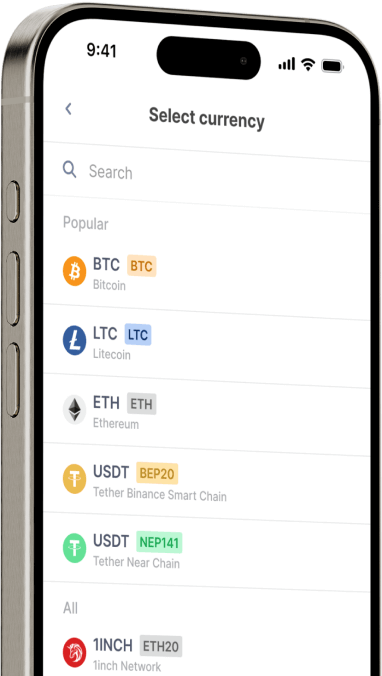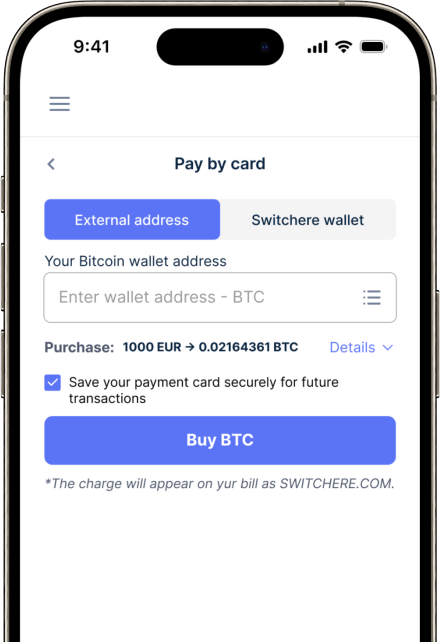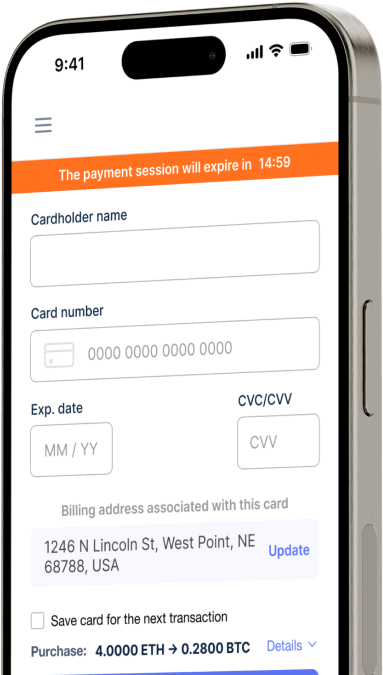Convert
Georgian Lari (GEL) to Bancor Network (BNT) Instantly
Purchase Bancor Network (BNT) with Georgian Lari (GEL) easily at Switchere and benefit from fast, secure transactions.
About
Bancor Network (BNT)
Bancor Network is a foundational decentralized finance (DeFi) protocol that enables automated, on-chain trading of digital assets. As one of the original automated market makers (AMMs), its primary mission is to solve a critical issue for liquidity providers (LPs): impermanent loss. This on-chain liquidity protocol utilizes a system of smart contracts to allow for peer-to-peer token swaps without traditional order books, aiming to provide deeper and more sustainable liquidity within the DeFi ecosystem. The network’s tokenomics are specifically designed to incentivize participation while protecting capital from the volatility inherent in standard AMM liquidity pools.
The core innovation of Bancor is its unique architecture featuring single-sided liquidity provision and Impermanent Loss Protection (ILP). Unlike typical AMMs that require LPs to deposit a pair of assets, Bancor allows users to stake a single token. The protocol achieves this through its native BNT utility token, which has an elastic supply. When a user provides a single asset, the protocol co-invests its own BNT to create the pool pair. This mechanism, funded by protocol fees, is what powers the ILP, compensating LPs for potential divergence loss over time and making yield farming more predictable. This structure is a key differentiator in the crowded decentralized exchange (DEX) space.
The Bancor Network Token (BNT) is central to the ecosystem’s function, serving as the common reserve asset in every liquidity pool. As a governance token, BNT holders can participate in the BancorDAO, voting on key protocol upgrades and parameter changes. Staking BNT not only secures the network but also grants users a share of the trading fees generated by the protocol. With advancements like Bancor v3, the protocol continues to refine its model for capital efficiency, solidifying its position as a pioneering force in sustainable on-chain liquidity solutions.
Buy Other 150+ Cryptocurrencies for Georgian Lari (GEL)
Other Coins for Georgian Lari (GEL)
-
GEL to ZRX
-
GEL to 1INCH
-
GEL to AAVE
-
GEL to ACH
-
GEL to ALGO
-
GEL to TLM
-
GEL to ANKR
-
GEL to APE
-
GEL to NFT
-
GEL to API3
-
GEL to APT
-
GEL to ARPA
-
GEL to AUDIO
-
GEL to AVAX
-
GEL to AVAX
-
GEL to AXS
-
GEL to BADGER
-
GEL to BAL
-
GEL to BNT
-
GEL to BAT
-
GEL to BNB
-
GEL to BSW
-
GEL to BSV
-
GEL to BLUR
-
GEL to BONE
-
GEL to CTSI
-
GEL to CELR
-
GEL to CELO
-
GEL to CEL
-
GEL to LINK
-
GEL to CHZ
-
GEL to CHR
-
GEL to C98
-
GEL to COMP
-
GEL to CFX
-
GEL to PEOPLE
-
GEL to CVX
-
GEL to ATOM
-
GEL to CTC
-
GEL to CRV
-
GEL to DAI
-
GEL to DASH
-
GEL to MANA
-
GEL to DENT
-
GEL to DGB
-
GEL to DYDX
-
GEL to XEC
-
GEL to EOS
-
GEL to ETC
-
GEL to ENS
-
GEL to ETHW
-
GEL to FET
-
GEL to FIL
-
GEL to FLOKI
-
GEL to GALA
-
GEL to GNO
-
GEL to ONE
-
GEL to HBAR
-
GEL to HOT
-
GEL to HOOK
-
GEL to ICX
-
GEL to ILV
-
GEL to IMX
-
GEL to INJ
-
GEL to ICP
-
GEL to IOST
-
GEL to IOTX
-
GEL to JASMY
-
GEL to JST
-
GEL to KAVA
-
GEL to KCS
-
GEL to KSM
-
GEL to KNC
-
GEL to LDO
-
GEL to LQTY
-
GEL to LPT
-
GEL to LOOKS
-
GEL to LRC
-
GEL to LUNA
-
GEL to MKR
-
GEL to MASK
-
GEL to EGLD
-
GEL to ALICE
-
GEL to NEAR
-
GEL to XEM
-
GEL to NEXO
-
GEL to NOT
-
GEL to NMR
-
GEL to OKB
-
GEL to OMG
-
GEL to ONT
-
GEL to EDU
-
GEL to OP
-
GEL to OGN
-
GEL to CAKE
-
GEL to PAXG
-
GEL to PENDLE
-
GEL to DOT
-
GEL to POL
-
GEL to QTUM
-
GEL to QNT
-
GEL to RDNT
-
GEL to XRD
-
GEL to RVN
-
GEL to REN
-
GEL to RSR
-
GEL to RLC
-
GEL to RPL
-
GEL to SFP
-
GEL to SHIB
-
GEL to SKL
-
GEL to SXP
-
GEL to STND
-
GEL to STG
-
GEL to XLM
-
GEL to GMT
-
GEL to STORJ
-
GEL to STMX
-
GEL to SUSHI
-
GEL to SNX
-
GEL to USDT (Polygon)
-
GEL to USDT (AVAC)
-
GEL to USDT (BEP20)
-
GEL to USDT (ERC20)
-
GEL to USDT (SPL)
-
GEL to USDT (NEP141)
-
GEL to USDT (FA2)
-
GEL to USDT (TRC20)
-
GEL to USDT (JETTON)
-
GEL to XTZ
-
GEL to GRT
-
GEL to SAND
-
GEL to TFUEL
-
GEL to THETA
-
GEL to RUNE
-
GEL to TON
-
GEL to TUSD (BEP20)
-
GEL to TUSD (TRC20)
-
GEL to TWT
-
GEL to UOS
-
GEL to UMA
-
GEL to UNI
-
GEL to USDC (Polygon)
-
GEL to USDC (SPL)
-
GEL to USDC (OP)
-
GEL to USDC (BEP20)
-
GEL to USDC (AVAC)
-
GEL to USDC (ARB)
-
GEL to USDC (ERC20)
-
GEL to VET
-
GEL to VRA
-
GEL to WAXP
-
GEL to WOO
-
GEL to WLD
-
GEL to WBTC
-
GEL to WMINIMA
-
GEL to XDC
-
GEL to YFI
-
GEL to YGG
-
GEL to ZIL
How to Buy Bancor Network (BNT)
Frequently Asked Questions
-
What is the most common method for buying Bancor Network (BNT) tokens using Georgian Lari (GEL)?
The most common method involves using a cryptocurrency exchange that supports GEL fiat deposits. You would typically register on a platform, complete the required KYC/AML compliance checks, deposit Georgian Lari via a bank transfer or card payment, and then execute a trade for BNT, often through an intermediate pair like GEL/USDT before trading USDT for BNT on their order book.
-
Can I find direct GEL/BNT trading pairs on major exchanges?
Direct GEL/BNT trading pairs are rare due to lower trading volume. The standard procedure is to use a GEL to crypto gateway to first acquire a major cryptocurrency like Bitcoin (BTC) or a stablecoin (e.g., USDT). You can then use that asset to trade for BNT on an exchange that lists the BNT token, which significantly increases your liquidity options.
-
What is the most secure way to store my BNT tokens after a GEL purchase?
For optimal security, you should transfer your BNT tokens from the exchange to a personal digital wallet where you control the private keys. A hardware wallet offers the highest level of security against online threats. Alternatively, a well-regarded software wallet is a good option. This practice of self-custody is crucial for securing your digital assets long-term.
-
Beyond purchasing, what is a key feature of the Bancor protocol for BNT holders?
A defining feature of Bancor is its Automated Market Maker (AMM) protocol which offers single-sided staking with impermanent loss protection. This allows BNT holders to provide liquidity using only their BNT tokens, participate in liquidity mining programs, and earn yield while being shielded from the potential downside of impermanent loss common in other DeFi protocols.
-
What types of fees are involved when converting GEL to BNT?
When converting GEL to BNT, you should anticipate several potential fees. First, there may be a deposit fee for your GEL fiat on-ramp transaction. Second, the exchange will charge a trading fee for executing the purchase. Finally, when you withdraw your BNT to a personal digital wallet, you will incur a blockchain transaction fee (gas fee), as BNT is an ERC-20 token on the Ethereum network.
-
What is the primary utility of the BNT token within the Bancor on-chain liquidity protocol?
The BNT token is fundamental to the Bancor protocol. It serves as the counterpart asset in every liquidity pool, enabling single-sided staking. It's also used for governance through the Bancor DAO, allowing holders to vote on protocol upgrades. Furthermore, the protocol mints BNT to compensate liquidity providers for impermanent loss, making it central to the system's unique protection mechanism.




